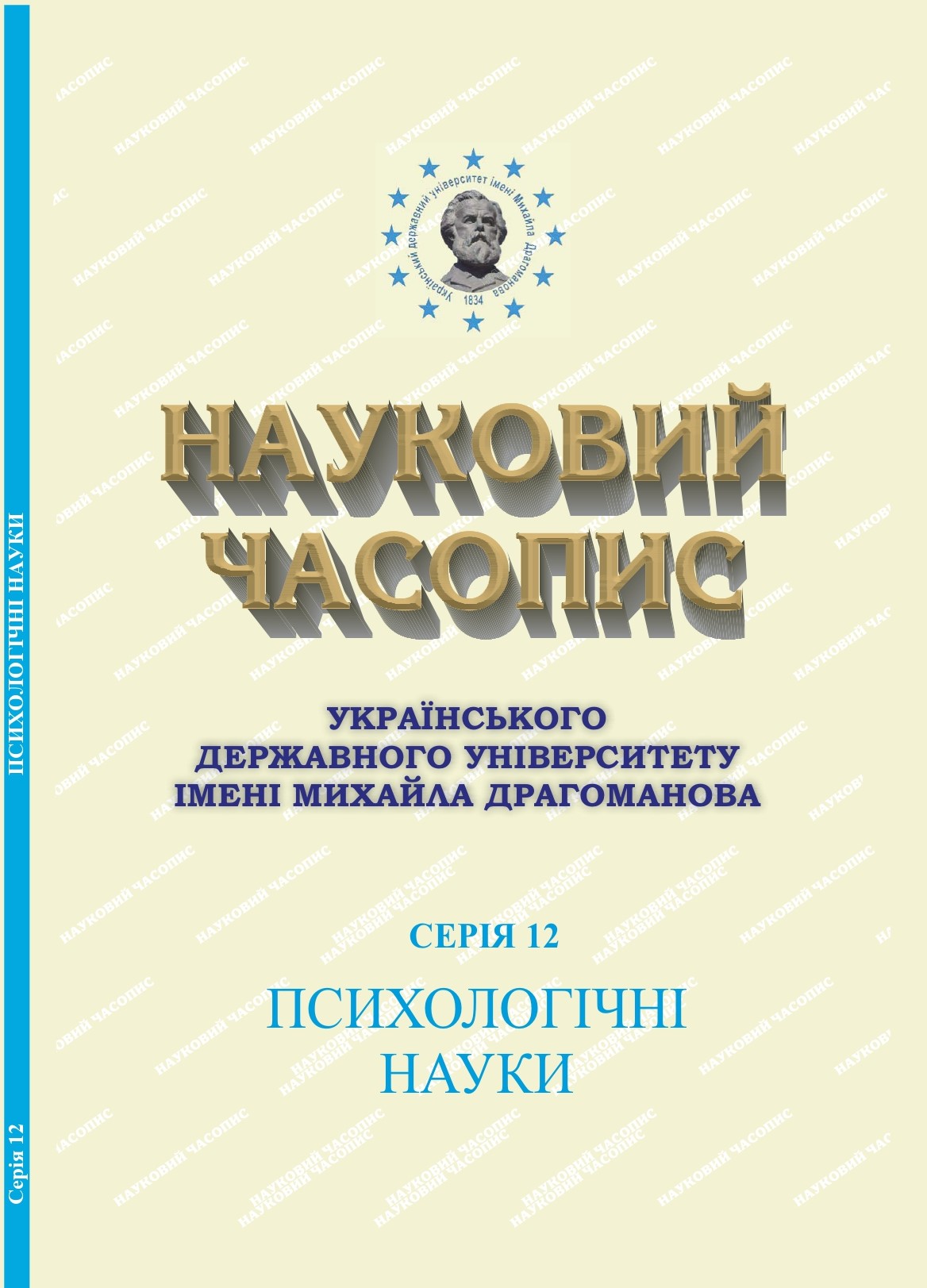THE INFLUENCE OF PARENTAL BURNOUT ON THE CONDITION OF ADOLESCENTS DURING THE WAR
DOI:
https://doi.org/10.31392/UDU-nc.series12.2023.22(67).07Keywords:
parenthood, emotional burnout, adolescents, well-being, combat, exhaustion.Abstract
The purpose of the study is to identify the level of parental burnout and the impact of this condition on the psychological state of adolescents. The sample was formed according to the M-method, families (at least 2 people: a child and a parent) were selected from two groups: families from the territories affected by the conflict (42 families in total), and families from the western regions of Ukraine, which were less affected by the war (59 families in total). Among the subgroups of parents, both mothers and fathers with at least one adolescent child aged 12 to 18 years were represented. The sample for this study consists of 101 families, divided into two groups: 42 families from conflict areas and 59 families from less affected regions of Ukraine. Parental burnout is defined using a model based on the Parental Burnout Assessment (PBA) methodology (Mikolajczak et al., 2020). In terms of well-being, two scales are used: the “Positive Mental Health Scale” is aimed to assess the severity of an individual’s life activity and the “Modified BBC Subjective Well-Being Scale” which provides a detailed assessment by subscales: psychological well-being, physical well-being and relationships (2022). Accordingly, the defined constructs will make it possible to assess the relationships between the defined phenomena. The presented empirical study showed that parental burnout is quite common in families living in war-torn conditions. We were also able to identify predictive demographic and contextual factors that contribute to burnout. In particular, the proximity to the combat zone, the level of education of parents and their professional involvement, and parents’ social network are the most significant. The main demographic factors (age, gender, family composition, etc.) have no pronounced influence on the characteristic under study. The results obtained confirm that the parental burnout syndrome is a significant predictor of a decrease in well-being among adolescents. In particular, such manifestations as emotional exhaustion from the parental role and the experience of over-saturation in interaction with the child have the strongest influence.
References
- Alisic, E., Zalta, A.K., Van Wesel, F., Larsen, S.E., Hafstad, G.S., Hassanpour, K., & Smid, G. E. (2014). Rates of post-traumatic stress disorder in trauma-exposed children and adolescents: Meta-analysis. British Journal of Psychiatry, 204(5), 335–340.
- Atilola, O., Stevanovic, D., Moreira, P., Dodig-Ćurković, K., Franic, T., Djoric, A., ... & Knez, R. (2021). External locus-of-control partially mediates the association between cumulative trauma exposure and posttraumatic stress symptoms among adolescents from diverse background. Anxiety, Stress, & Coping, 34(6), 626–644.
- Barenbaum, J., Ruchkin, V., Schwab-Stone, M., & La Greca, A. (2015). Stressors, social support, and tests of the buffering hypothesis: Effects on psychological symptomatology, concurrent stress, and academic performance in adolescents. Journal of Applied Developmental Psychology, 37, 40–51.
- Sagaltici, E., Alpak, G., & Altindag, A. (2020). Traumatic life events and severity of posttraumatic stress disorder among Syrian refugees residing in a camp in Turkey. Journal of loss and trauma, 25(1), 47–60.
- Catani, C., Jacob, N., Schauer, E., Kohila, M., & Neuner, F. (2008). Family violence, war, and natural disasters: A study of the effect of extreme stress on children's mental health in Sri Lanka. BMC Psychiatry, 8. Retrieved from https://bmcpsychiatry.biomedcentral.com/articles/10.1186/1471-244X-8-33
- Derluyn, I., & Broekaert, E. (2007). Different perspectives on emotional and behavioral problems in unaccompanied refugee children and adolescents. Ethnicity & Health, 12(2), 141–162.
- El-Khodary, B., Samara, M., Ziegler, S., & Wittmann, W. W. (2018). Mental health of Palestinian adolescents in Gaza Strip: A cross-sectional survey. Lancet, 391, 10.
- Hubert, S., & Aujoulat, I. (2018). Parental burnout: When exhausted mothers open up. Frontiers in psychology, 9, 1021. https://doi.org/10.3389/fpsyg.2018.01021
- Katz, C.L., Dulmus, C.N., & Sowers, K.M. (2018). Treating trauma in children and adolescents: Trauma-focused cognitive-behavioral therapy for practitioners. Routledge.
- Mikolajczak, M., Brianda, M.-E., Avalosse, H., & Roskam, I. (2018). Consequences of parental burnout: Its specific effect on child neglect and violence. Child Abuse & Neglect, 80, 134–145. https://doi.org/10.1016/j.chiabu.2018.03.025
- Mikolajczak, M., Gross, J.J., Stinglhamber, F., Lindahl Norberg, A., & Roskam, I. (2020). Is parental burnout distinct from job burnout and depressive symptoms? Clinical Psychological Science, 8(4), 673–689. https://doi.org/10.1177/2167702620917447
- Mitchell, S., Shannon, C., Mulholland, C., & Hanna, D. (2021). Reaching consensus on the principles of trauma‐informed care in early intervention psychosis services: A Delphi study. Early Intervention in Psychiatry, 15(5), 1369–1375. https://doi.org/10.1111/eip.13068
- Nabuzoka, D., & Lopes Cardozo, B. (2012). Substance use disorders among war-affected populations in Africa: A systematic review. Substance Abuse and Rehabilitation, 3, 25–34.
- Orcutt, M., Patel, P., & Patel, S. (2015). Adolescent displacement in Nepal: A study of psychosocial adjustment. Journal of Adolescence, 45, 153–163.
- Tol, W.A., Song, S., Jordans, M.J.D., & Annual Research Review, T.H.E. (2011). Annual research review: Resilience and mental health in children and adolescents living in areas of armed conflict – a systematic review of findings in low- and middle-income countries. Journal of Child Psychology and Psychiatry, 52(4), 373–386.

